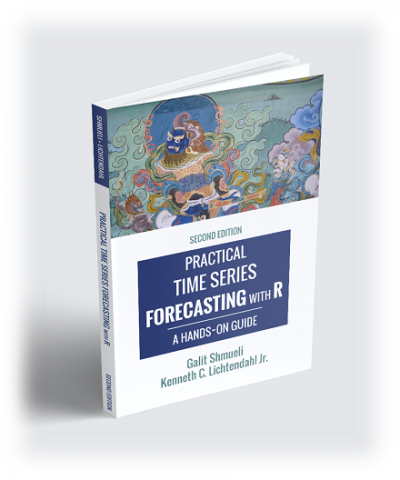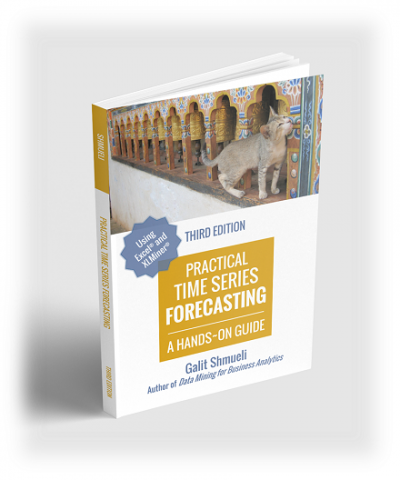Foreword xvii
Preface to the second edition xix
Preface to the first edition xxi
Acknowledgments xxiii
Part I PRELIMINARIES
Chapter 1 Introduction 3
1.1 What Is Data Mining? 3
1.2 Where Is Data Mining Used? 4
1.3 Origins of Data Mining 4
1.4 Rapid Growth of Data Mining 5
1.5 Why Are There So Many Different Methods? 6
1.6 Terminology and Notation 7
1.7 Road Maps to This Book 9
Chapter 2 Overview of the Data Mining Process 12
2.1 Introduction 12
2.2 Core Ideas in Data Mining 13
2.3 Supervised and Unsupervised Learning 15
2.4 Steps in Data Mining 15
2.5 Preliminary Steps 17
2.6 Building a Model: Example with Linear Regression 27
2.7 Using Excel for Data Mining 34
Part II DATA EXPLORATION AND DIMENSION REDUCTION
Chapter 3 Data Visualization 43
3.1 Uses of Data Visualization 43
3.2 Data Examples 45
3.3 Basic Charts: Bar Charts, Line Graphs, and Scatterplots 45
3.4 Multidimensional Visualization 52
3.5 Specialized Visualizations 63
3.6 Summary ofMajor Visualizations and Operations, According to Data Mining Goal 67
Chapter 4 Dimension Reduction 71
4.1 Introduction 71
4.2 Practical Considerations 72
4.3 Data Summaries 73
4.4 Correlation Analysis . 76
4.5 Reducing the Number of Categories in Categorical Variables 76
4.6 Converting a Categorical Variable to a Numerical Variable 78
4.7 Principal Components Analysis 78
4.8 Dimension Reduction Using Regression Models 87
4.9 Dimension Reduction Using Classification and Regression Trees 88
Part III PERFORMANCE EVALUATION
Chapter 5 Evaluating Classification and Predictive Performance 93
5.1 Introduction 93
5.2 Judging Classification Performance 94
5.3 Evaluating Predictive Performance 115
Part IV PREDICTION AND CLASSIFICATION METHODS
Chapter 6 Multiple Linear Regression 121
6.1 Introduction 121
6.2 Explanatory versus Predictive Modeling 122
6.3 Estimating the Regression Equation and Prediction 123
6.4 Variable Selection in Linear Regression 127
Chapter 7 k-Nearest Neighbors (k-NN) 137
7.1 k-NN Classifier (Categorical Outcome) 137
7.2 k-NN for a Numerical Response 142
7.3 Advantages and Shortcomings of k-NN Algorithms 144
Chapter 8 Naive Bayes 148
8.1 Introduction 148
8.2 Applying the Full (Exact) Bayesian Classifier 150
8.3 Advantages and Shortcomings of the Naive Bayes Classifier 159
Chapter 9 Classification and Regression Trees 164
9.1 Introduction 164
9.2 Classification Trees 166
9.3 Measures of Impurity 169
9.4 Evaluating the Performance of a Classification Tree 173
9.5 Avoiding Overfitting 179
9.6 Classification Rules from Trees 183
9.7 Classification Trees for More Than Two Classes 185
9.8 RegressionTrees 185
9.9 Advantages, Weaknesses, and Extensions 187
Chapter 10 Logistic Regression 192
10.1 Introduction 192
10.2 Logistic Regression Model 194
10.3 Evaluating Classification Performance 202
10.4 Example of Complete Analysis: Predicting Delayed Flights 206
10.5 Appendix: Logistic Regression for Profiling 211
Chapter 11 Neural Nets 222
11.1 Introduction 222
11.2 Concept and Structure of a Neural Network 223
11.3 Fitting a Network to Data 223
11.4 Required User Input 237
11.5 Exploring the Relationship Between Predictors andResponse 239
11.6 Advantages and Weaknesses of Neural Networks 239
Chapter 12 Discriminant Analysis 243
12.1 Introduction 243
12.2 Distance of an Observation from a Class 246
12.3 Fisher’s Linear Classification Functions 247
12.4 Classification Performance of Discriminant Analysis 251
12.5 Prior Probabilities 252
12.6 Unequal Misclassification Costs 252
12.7 Classifying More Than Two Classes 253
12.8 Advantages and Weaknesses 254
Part V MINING RELATIONSHIPS AMONG RECORDS
Chapter 13 Association Rules 263
13.1 Introduction 263
13.2 Discovering Association Rules in Transaction Databases 263
13.3 Generating Candidate Rules 265
13.4 Selecting Strong Rules 267
13.5 Summary 275
Chapter 14 Cluster Analysis 279
14.1 Introduction 279
14.2 Measuring Distance Between Two Records 283
14.3 Measuring Distance Between Two Clusters 287
14.4 Hierarchical (Agglomerative) Clustering 290
14.5 Nonhierarchical Clustering: The k-Means Algorithm 295
Part VI FORECASTING TIME SERIES
Chapter 15 Handling Time Series 305
15.1 Introduction 305
15.2 Explanatory versus Predictive Modeling 306
15.3 Popular Forecasting Methods in Business 307
15.4 Time Series Components 308
15.5 Data Partitioning 312
Chapter 16 Regression-Based Forecasting 317
16.1 Model with Trend 317
16.2 Model with Seasonality 322
16.3 Model with Trend and Seasonality 324
16.4 Autocorrelation and ARIMA Models 324
Chapter 17 Smoothing Methods 344
17.1 Introduction 344
17.2 MovingAverage 345
17.3 Simple Exponential Smoothing 350
17.4 Advanced Exponential Smoothing 353
Part VII CASES
Chapter 18 Cases 367
18.1 Charles Book Club 367
18.2 German Credit 375
18.3 Tayko Software Cataloger 379
18.4 Segmenting Consumers of Bath Soap 383
18.5 Direct-MailFundraising 387
18.6 Catalog Cross Selling 389
18.7 Predicting Bankruptcy 390
18.8 Time Series Case: Forecasting Public Transportation Demand 393
References 397
Index 399

